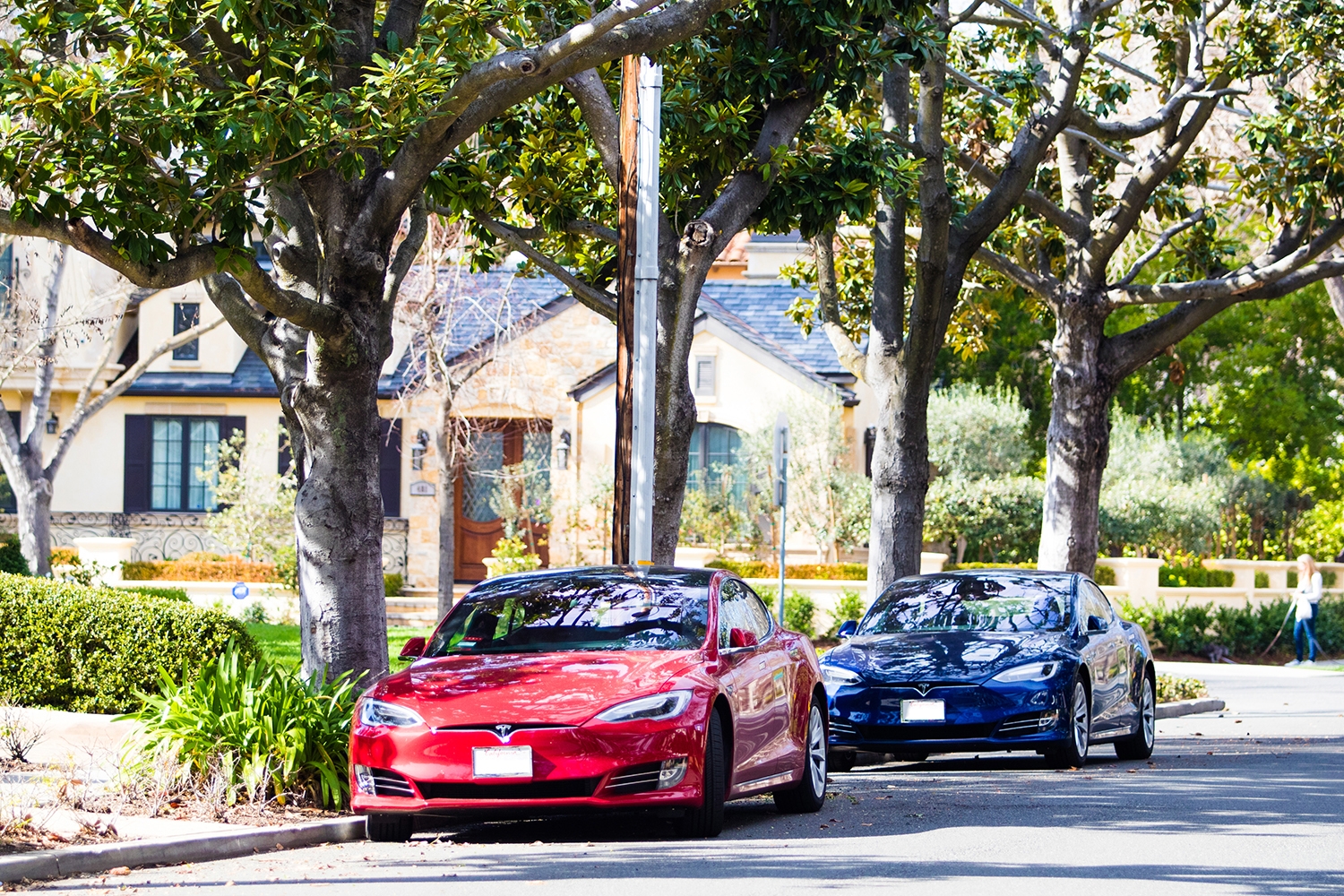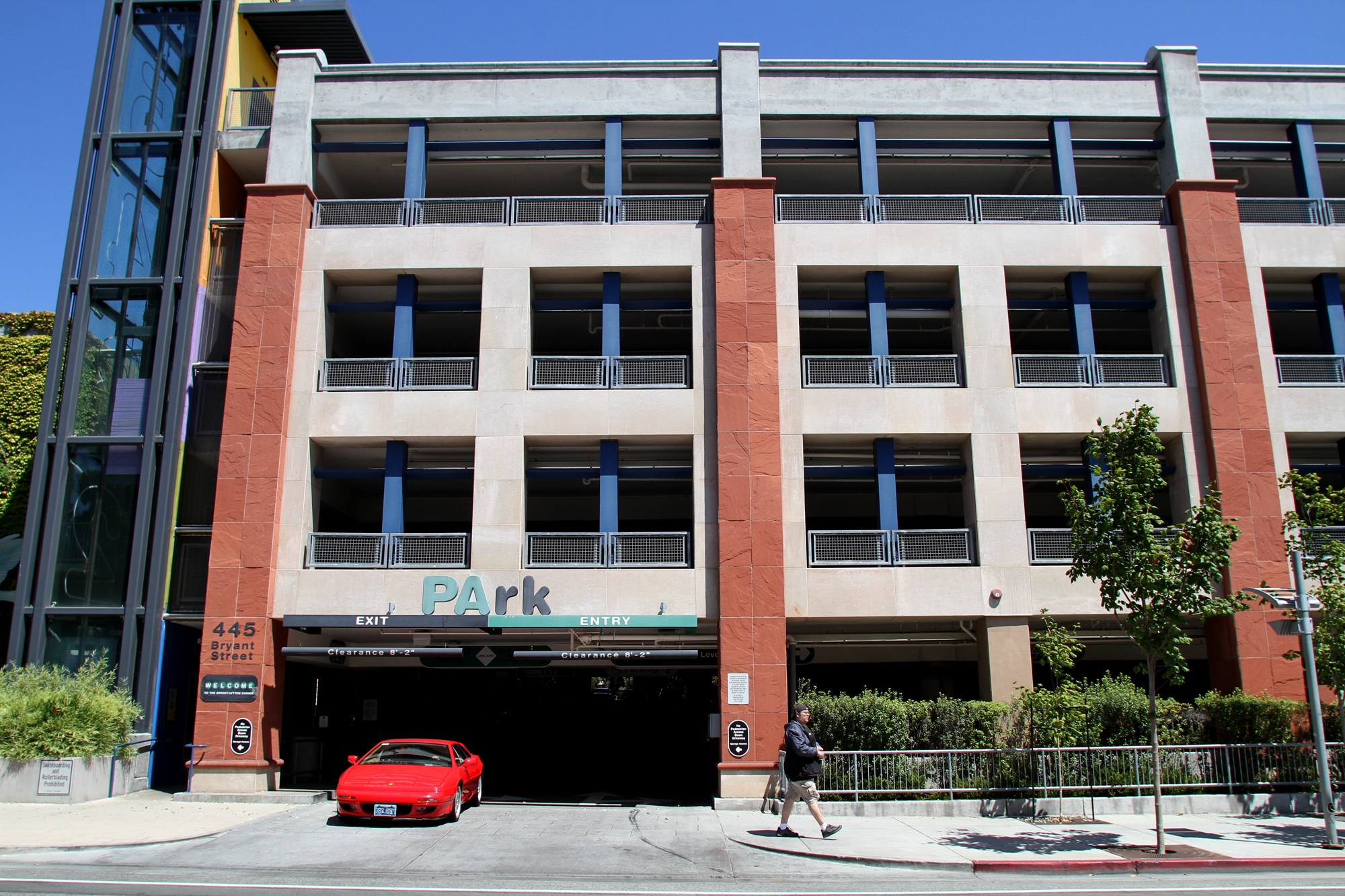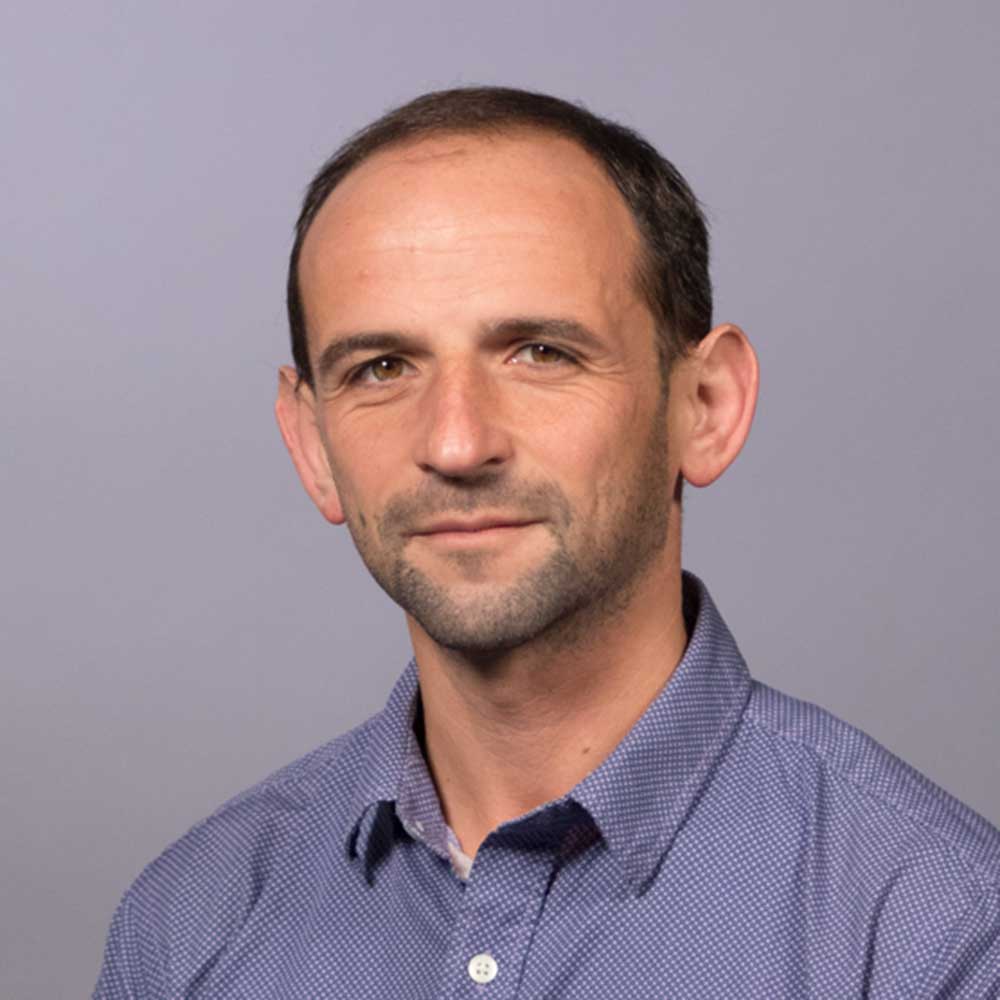Eager to accelerate the public transition to electric vehicles, the Palo Alto City Council signed a deal last week with Tesla, allowing the company to install 19 vehicle chargers at the city-owned garage on Bryant Street and Lytton Avenue.
The council's unanimous vote on June 21 capped more than two years of negotiations between the city and Tesla, which is headquartered at Stanford Research Park and which dominates the local market. A report from the city's Administrative Services Department notes that Tesla has an estimated 50% market share in Palo Alto.
The approved agreement allows Tesla to install its V3 Supercharger station on the third floor of the garage at 445 Bryant St. Under the approved terms, the company will pay the city $2,100 per month, as well as the cost of utilities and station maintenance. The deal is for seven years, with two automatic five-year renewal options, for a potential total of 17 years.
Either party will be able to terminate the agreement after the initial seven-year term with a 90-day notice.
City Manager Ed Shikada said the agreement helps support the city's sustainability goals, which rely heavily on widespread adoption of electric vehicles. While electric vehicles currently account for more than 30% of new car sales in Palo Alto — the highest adoption rate in the country, according to the city — staff estimates that it would need the adoption rate to approach 85% to have a chance of meeting its goal of reducing its greenhouse gas emissions by 80% by 2030, with 1990 as the baseline. The city would also need to see about 40% of commuters into town convert to electric vehicles, up from 3% today.
Shikada said the deal with Tesla also supports downtown's business climate by providing charging areas for customers for area retail and service establishments. And it helps out renters and residents in multifamily buildings in the downtown area, many of whom are deterred from going electric because of a lack of conveniently located charging stations. Shikada noted that there are more than 500 residential parcels within a quarter mile of the Bryant Street garage.
Council member Greer Stone said that for many renters like himself, the lack of electric-vehicle charging stations at their apartment complexes creates a "big barrier" to adoption.
"This has been a personal issue in deciding whether to purchase an electric vehicle because I don't have capacity to charge," Stone said.
Shikada described Tesla's Superchargers as "high-capacity, low-duration" charging stations. According to the company's website, they enable users to recharge for up to 200 miles in 15 minutes. The installation of equipment would reduce the number of parking spaces in the third-floor area from 21 to 19. Even with the new equipment in place, the spaces would remain available for all vehicles, according to staff.
The council had discussed the Tesla deal in a Jan. 19 closed session, at which time members authorized staff to return with a license agreement that would allow the company to install the equipment and use the stalls on a "non-exclusive basis," according to the new report. In approving the deal on June 21, council members largely concurred with Shikada about the benefits of the new equipment. Mayor Tom DuBois said he supports having the city invest in charging infrastructure and lauded the benefit that would bring to downtown merchants and restaurants. Many of these businesses, he noted, compete with Stanford Shopping Center, where Tesla installed a Supercharger station in November 2019.
The report from city staff notes that the Stanford Shopping Center station is among Tesla's busiest. Tesla is "optimistic that the proposed Bryant/Lytton Supercharging Station will support hundreds and eventually thousands of monthly visits as an amenity for Tesla owners locally and from all over the Bay Area," the report states.
Vice Mayor Pat Burt lauded the deal, noting that other cars will still be able to use the 19 spaces where Tesla is installing the chargers.
"Tesla isn't buying these stalls," Burt said. "They are buying the right to put a charger on a stall that other people can use without a Tesla vehicle."
In addition to approving the deal with Tesla, the council prepared for similar partnerships in the future by adopting a framework for evaluating unsolicited proposals made by private companies for public facilities. Under the newly approved rules, a department director would evaluate these proposals for consistency with the city's goals and, if appropriate, forward the application to the city manager for review. The city manager would then gather additional information, including the purpose of the proposal, the project description and the proposed terms, and consider whether the project would "produce operational, financial, or other advantage for the City to publicly solicit alternative proposals for the property at issue." Projects that exceed the city manager's authority would be brought to the council for discussion and possible approval.
Burt, who made the motion to approve the new framework, acknowledged that each project may have "a certain amount of uniqueness" but agreed with staff that adopting a set of rules to govern unsolicited proposals will make the process less opaque.
"This increases the transparency over how we'd approach these kinds of proposals," Burt said.




Comments
Downtown North
Registered user
on Jun 30, 2021 at 10:42 am
Registered user
on Jun 30, 2021 at 10:42 am
Due to repeated violations of our Terms of Use, comments from this poster are automatically removed. Why?
Registered user
Fairmeadow
on Jun 30, 2021 at 10:48 am
Registered user
on Jun 30, 2021 at 10:48 am
Do these chargers work only for Teslas? If so, I'd question Shikada's assertion that this is going to be a big help for people living in multi-family dwellings. Better to provide chargers that work with lower-priced vehicles.
Registered user
Another Palo Alto neighborhood
on Jun 30, 2021 at 11:31 am
Registered user
on Jun 30, 2021 at 11:31 am
The charge may be free but does the car owner have to pay to park?
Most Tesla superchargers are free! The local businesses do well as the driver usually spends money while the car is being charged. They are usually in places where the driver can buy more than fast food and a restroom break.
Registered user
Another Palo Alto neighborhood
on Jun 30, 2021 at 11:48 am
Registered user
on Jun 30, 2021 at 11:48 am
Electric bikes and foot-powered bikes are a much better way to get around Palo Alto. Our terrain and weather are much better than the Netherlands where most people bike for transportation. This is the easiest place to bike I have ever lived (and at 62 I have lived a lot of places). If you really care about reducing greenhouse gas emissions (GHGs), e-bikes are far less impactful to manufacture, they contribute far less to traffic congestion and wear and tear on public streets and safety impacts. They are FAR less expensive to park. (They take up less land for parking and road space, which at Palo Alto land prices, should be a significant public consideration). If city staff cared about managing costs, they'd be working harder on accommodating bikes and e-bikes.
You can plug an e-bike battery into a regular outlet, CM Stone, for your commute to work. Ride a bike to school--like the kids do. An e-bike (especially the cargo bike variety) is a great alternative to driving for local trips--and they can carry pretty big loads of groceries and work supplies.
Switching to e-cars does nothing at all to reduce the traffic congestion and safety impacts that motor vehicles create in our community. E-cars generate more GHGs overall than e-bikes when you consider GHGs generated by road and parking construction and maintenance, congestion that forces gas powered vehicles to idle, GHGs generated by manufacture of these vehicles, and GHGs generated by production of electricity to charge them.
e-bike design is rapidly advancing. They now can travel longer distances and carry greater loads.
They are WAY cheaper to buy and maintain than a car too. If you are going electric, a regular bike or e-bike might be a more flexible option to consider. You'll save tens of thousands of dollars and greatly reduce your footprint on our planet. Transportation is the biggest generator of GHGs in the Bay Area. Let's each do our part to protect our planet. Climate change is real.
Registered user
Another Palo Alto neighborhood
on Jul 1, 2021 at 8:45 am
Registered user
on Jul 1, 2021 at 8:45 am
And yet the City still hasn't been able to put electronic signage to show how much space is available in any garage?
We are the laughing stock of many other Bay Area cities as we are still unable to use technology to enable us to park.
Something very wrong with Palo Alto.
Registered user
Old Palo Alto
on Jul 6, 2021 at 10:30 pm
Registered user
on Jul 6, 2021 at 10:30 pm
We own two Teslas. One of the many advantages is that you can easily see how many supercharger stalls are available when deciding which charging station to use. To allow non-Teslas to park and not use the chargers will make it much less likely anyone who gets burned once will go back. The third floor is already making it user unfriendly. If it were me, I'd go to Stanford and not take the risk that non-electric cars are parked in all the "available" stalls. Ed made a mistake by insisting these are for all cars.